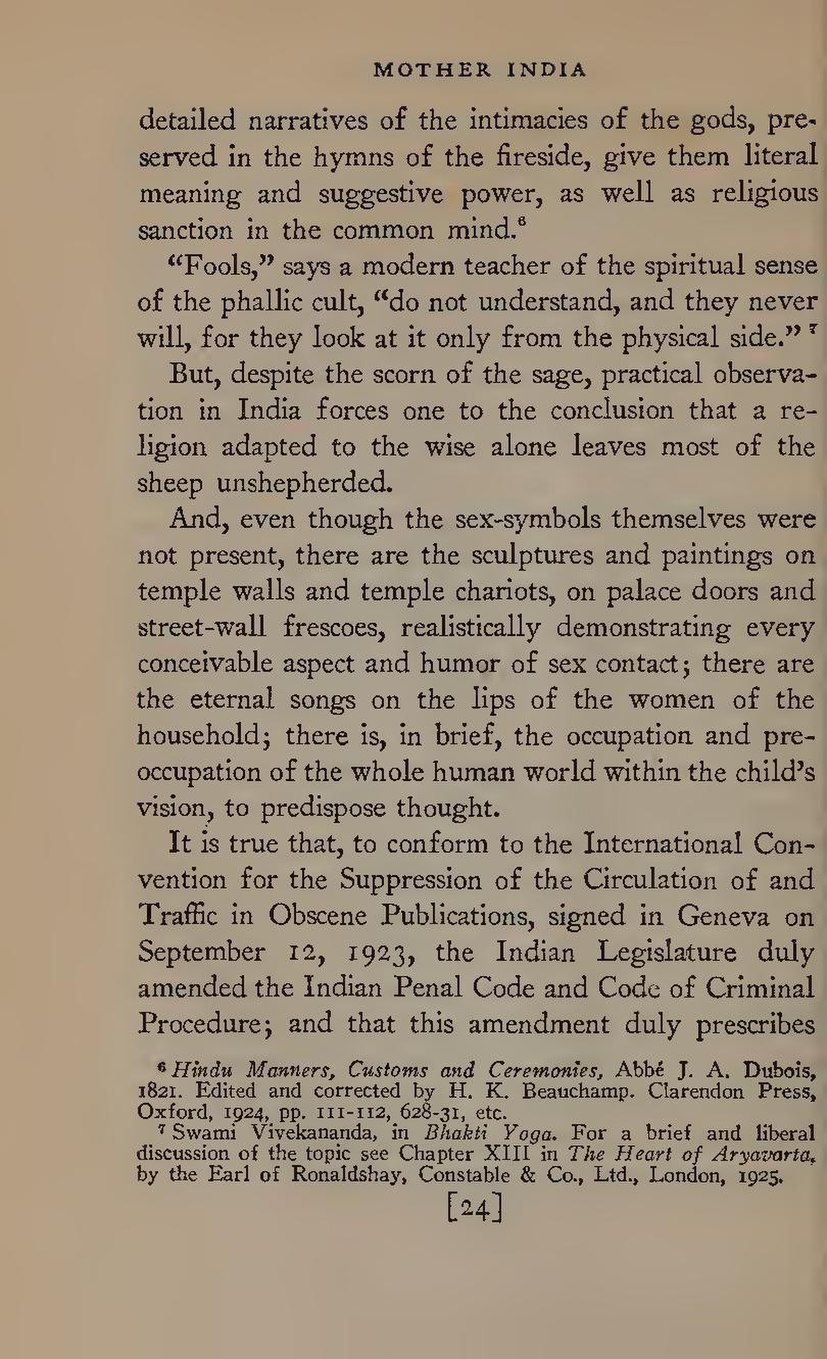MOTHER INDIA
detailed narratives of the intimacies of the gods, preserved in the hymns of the fireside, give them literal meaning and suggestive power, as well as religious sanction in the common mind.[1]
“Fools,” says a modern teacher of the spiritual sense of the phallic cult, “do not understand, and they never will, for they look at it only from the physical side.”[2]
But, despite the scorn of the sage, practical observation in India forces one to the conclusion that a religion adapted to the wise alone leaves most of the sheep unshepherded.
And, even though the sex-symbols themselves were not present, there are the sculptures and paintings on temple walls and temple chariots, on palace doors and street-wall frescoes, realistically demonstrating every conceivable aspect and humor of sex contact; there are the eternal songs on the lips of the women of the household ; there is, in brief, the occupation and preoccupation of the whole human world within the child’s vision, to predispose thought.
It is true that, to conform to the International Convention for the Suppression of the Circulation of and Traffic in Obscene Publications, signed in Geneva on September 12, 1923, the Indian Legislature duly amended the Indian Penal Code and Code of Criminal Procedure ; and that this amendment duly prescribes
- ↑ Hindu Manners, Customs and Ceremonies, Abbé J. A. Dubois, 1821. Edited and corrected by H. K. Beauchamp. Clarendon Press, Oxford, 1924, pp. 111-112, 628-31, etc.
- ↑ Swami Vivekananda, in Bhakti Yoga. For a brief and liberal discussion of the topic see Chapter XIII in The Heart of Aryavarta, by the Earl of Ronaldshay, Constable & Co., Ltd., London, 1925.
